The third wave of asbestos litigation: Emerging risks from DIY projects
Australia is currently navigating what could be termed the “third wave” of dust disease litigation. This new phase is marked
Australia is currently navigating what could be termed the “third wave” of dust disease litigation. This new phase is marked by a shift from traditional occupational exposures to the rising risks associated with do-it-yourself (DIY) home renovations. Understanding this evolving landscape is crucial for anyone undertaking home improvement projects.
In this article, we’ll look at each of the waves of asbestos litigation, the risks associated with DIY home renovations and your options for legal recourse.
Historically, asbestos litigation focused on workers with prolonged, direct exposure to asbestos, particularly in industries like construction, shipbuilding, and manufacturing. The main issue was friable asbestos—materials that crumbled easily and released harmful fibres into the air, posing serious health risks.
Workers exposed to friable asbestos developed diseases like asbestosis, lung cancer, and mesothelioma. During this ‘first wave’, legal claims primarily focused on workplace safety standards and employer negligence. There are still instances of occupational asbestos litigation, however, these have declined since its peak in the late 1980s and early 1990s.
Australia’s asbestos use peaked in the 1970s, with some of the highest per-capita consumption rates in the world. The phase-out of asbestos was gradual: crocidolite was banned in the late 1960s, amosite in the mid-1980s, and a full ban on all asbestos types (crocidolite, amosite, and chrysotile) wasn’t enforced until late 2003. This comprehensive ban followed extensive advocacy by trade unions and non-government organisations
Despite the ban being in place for over twenty years, Australia still faces significant challenges, as the epidemic of asbestos-related diseases only recently reached its peak. This is due to the long latency period for mesothelioma. This is usually between 20 and 60 years.
Between 1982 and 2016, 16,679 new cases of malignant mesothelioma were reported, with 84% of these affecting men. The incidence rate of malignant mesothelioma has stabilised in the past decade.
Our client, who had only brief exposure to asbestos dust during his early career as a labourer, was later diagnosed with mesothelioma. Despite changing his career path to become a respected teacher, his past exposure led to serious health issues due to unsafe working conditions in the early 1960s.
We pursued legal action against his former employer and the premises’ occupier, securing $460,000 in damages. This compensation, while not restoring his health or fully alleviating his family’s loss, acknowledged the negligence that led to his condition.
The expedited proceedings allowed our client to secure financial stability for his family during his illness. Sadly, he passed away shortly after receiving the settlement.
The second wave of asbestos litigation highlighted a different but related issue: secondary exposure.
This typically involved individuals who were not directly exposed to asbestos but were affected due to their association with those who were. For example, washerwomen and family members of asbestos workers could experience asbestos exposure from the contaminated clothing brought home by workers.
Secondary exposure can occur by:
Individuals most at risk of secondary exposure, include:
This type of exposure, though indirect, still poses significant health risks and has led to numerous legal claims. As of 2022, according to the Australian Institute of Health and Welfare’s (AIHW) report on Mesothelioma in Australia in 2022, non-occupational asbestos exposure has overtaken occupational exposure.
It reported:
Exposure indicated | Percentage |
Occupational exposure only | 11.5% |
Non-occupational exposure only | 35.9% |
Both occupational and non-occupational exposure | 52.6% |
Today, we are witnessing what could be termed the “third wave” of asbestos litigation, mainly due to the increasing risk of exposure for people who take on DIY home renovation projects.
Because it takes a long time for asbestos-related diseases to show up, and so many people are fixing up old homes themselves, we’re only now starting to see the full impact of this third wave of asbestos litigation – and there’s not a lot of available data on it yet.
This new phase is characterised by:
As more Australians take on home renovation projects themselves, many are unwittingly exposing themselves to asbestos. Homes built before the 1980s are particularly risky, as they may contain asbestos in materials like insulation, roofing, and floor tiles.
The most common locations you might find asbestos in the home include:
A 2016 Australian Asbestos Safety and Eradication Agency (ASEA) report found that asbestos cement sheeting is the most common hazard encountered by DIYers. This is because it’s overwhelmingly the largest volume asbestos building product found in Australian residences.
A significant issue is the lack of awareness among DIYers regarding the presence of asbestos in older homes. Many homeowners do not realise that disturbing asbestos-containing material can release dangerous fibres into the air, or do not give weight to how risky this is.
There’s little in the way of research on asbestos exposure during DIY projects. However, a 2008 paper, ‘Asbestos exposure during home renovation in New South Wales’ provided some startling self-reported data.
53.7% self-reported as DIY renovators. Of these:
This avoidable exposure can put both adults and children at risk for many years to come.
Many DIY projects are undertaken without proper asbestos checks or safety measures. This lack of precaution can lead to unintentional exposure, as individuals may not use the appropriate protective gear or methods for handling asbestos safely.
The 2016 ASEA report found asbestos exposure was heightened if:
The rise in DIY-related asbestos exposure has started to generate a new wave of litigation. Claims are emerging from individuals who have been diagnosed with asbestos-related diseases after undertaking home renovation projects.
This shift underscores the need for greater public education on asbestos risks and proper handling procedures.
Yes, you may be able to sue for asbestosis caused by DIY. If you were exposed to asbestos while renovating or working on your home, you may have grounds for a legal home.
Even if you purchased an older home without being aware of asbestos-containing materials, you may still have a claim. Manufacturers have a duty to warn consumers about the risks associated with their products, and failure to do so can be grounds for legal actions.
To establish a claim, it’s crucial to identify the specific manufacturer of the asbestos-containing product. Taking samples of the material can help you determine the source. If you’ve already removed the asbestos, it may be more difficult to identify the manufacturer (defendant/s).
If you believe you have a claim, seek out a consultation with a dust disease lawyer. They will help you explore your options for pursuing a claim.
To address the risks associated with this third wave of asbestos exposure, several steps are important:
Increased awareness campaigns are needed to inform homeowners about the potential dangers of asbestos in older homes and the importance of professional asbestos checks before beginning any renovation work.
SafeWork offers an online asbestos awareness and safety course with information to help you identify asbestos and hazardous activities that could lead to asbestos exposure.
Strengthening regulations around DIY renovations and ensuring that homeowners are aware of their responsibilities when dealing with asbestos-containing materials can help mitigate risks.
Encouraging DIYers to consult with professionals for asbestos inspections and safe removal can prevent accidental exposure and subsequent health issues.
Providing support and resources for individuals who have been exposed to asbestos through DIY activities is essential. This includes access to medical care, legal advice, and compensation for those affected.
For those affected by asbestos exposure due to DIY renovations, personal injury claims may provide a route to compensation and justice.
To file a compensation claim, individuals with mesothelioma need to present medical proof of their diagnosis and provide details on when, where, and how they were exposed to asbestos outside of a workplace setting.
If you or a loved one has been diagnosed with an asbestos-related disease following home renovation projects, it’s crucial to seek legal advice promptly. A personal injury lawyer specialising in dust disease compensation claims can guide you through the legal process, help gather evidence, and pursue compensation for medical expenses, lost income, and pain and suffering.
For more information or to discuss your case with a personal injury specialist, contact us today.
Australia is currently navigating what could be termed the “third wave” of dust disease litigation. This new phase is marked
Silicosis is a chronic lung disease that develops when tiny particles of crystalline silica dust—often found in materials like sandstone,

With seven years of legal experience, Katie Ferrier specialises in Dust Disease and Medical Negligence claims. Katie combines a rigorous analytical approach with deep empathy to achieve optimal outcomes for clients impacted by negligence.
In the spirit of reconciliation GMP Law acknowledges the Traditional Custodians of country throughout Australia and their connections to land, sea, and community. We pay our respects to their Elders past, present, and emerging, and extend that respect to all Aboriginal and Torres Strait Islander peoples today.

Your location is currently:
Please wait while you are redirected to the right page...